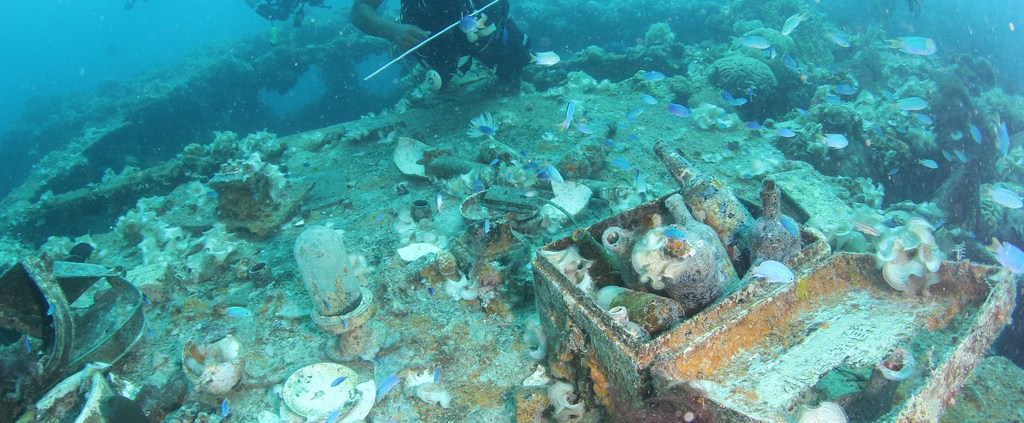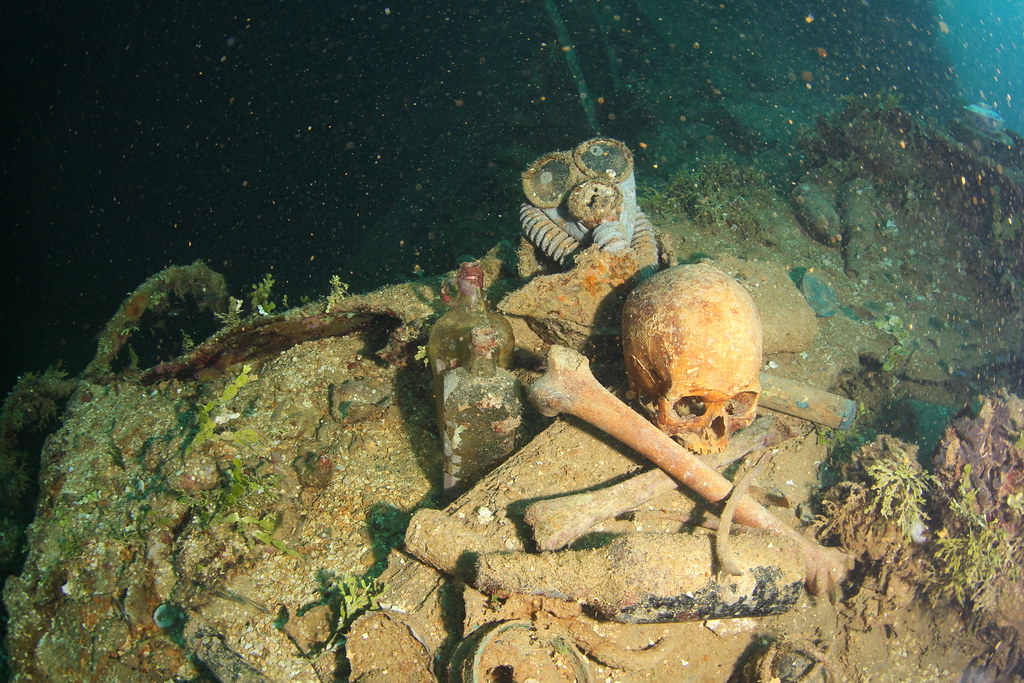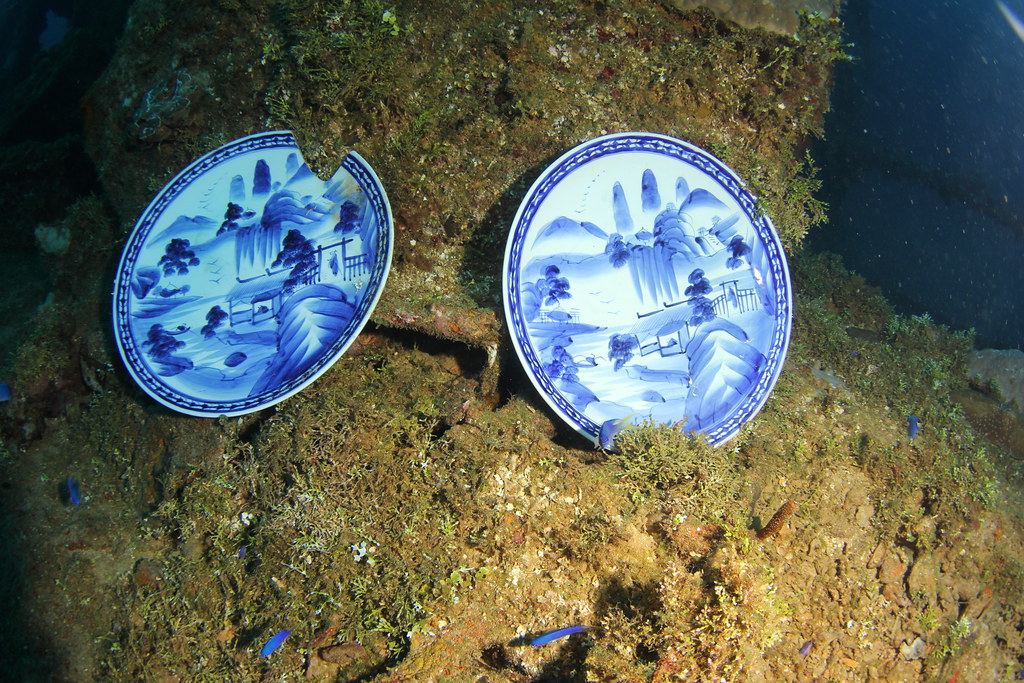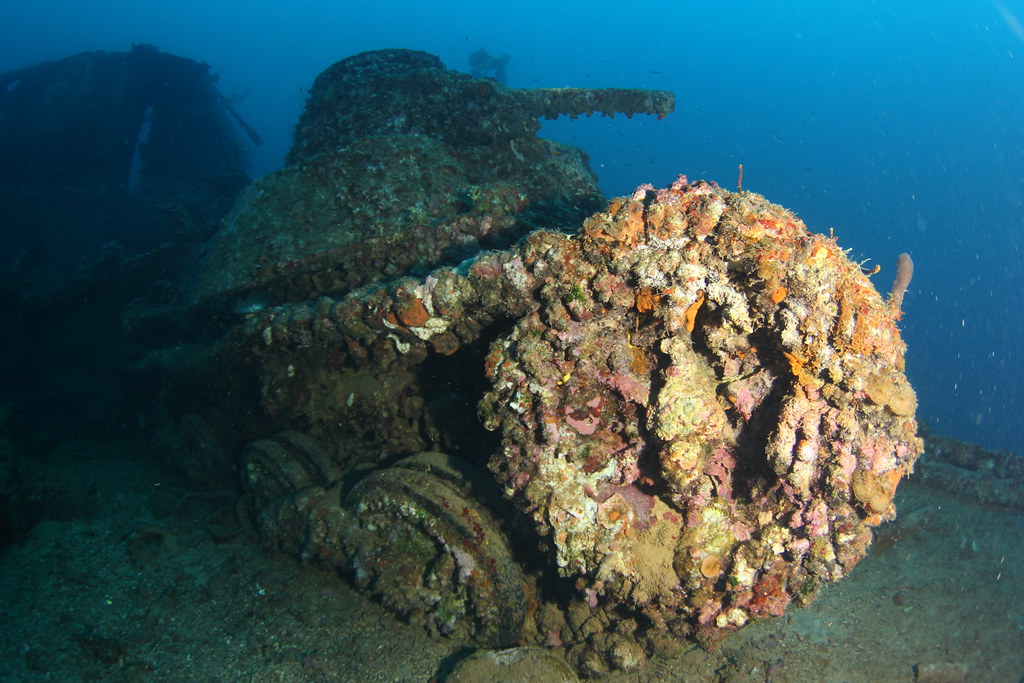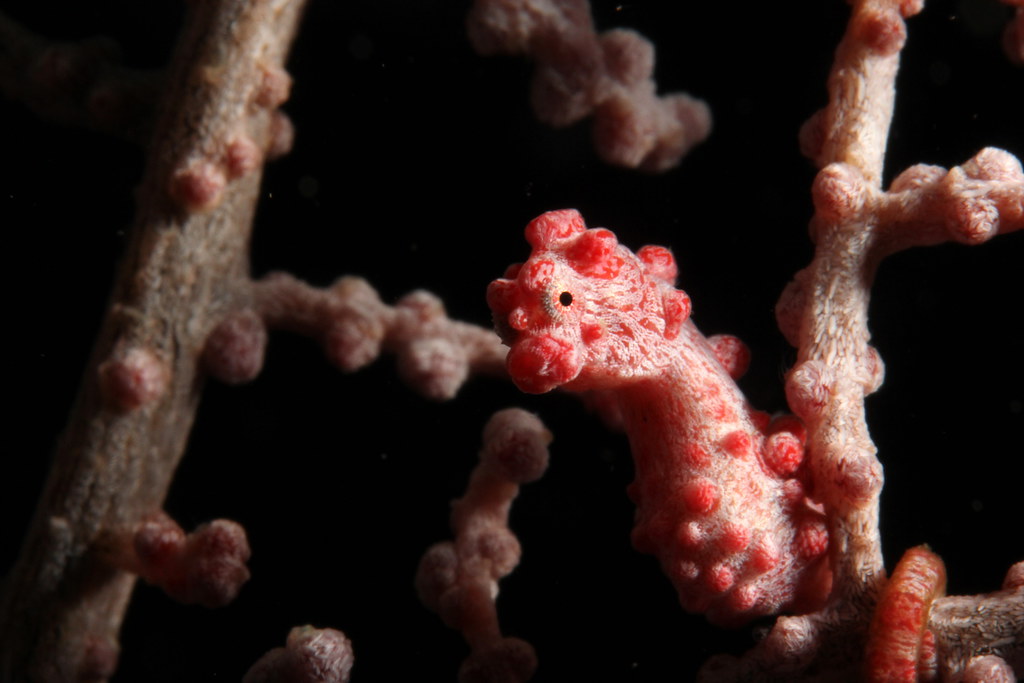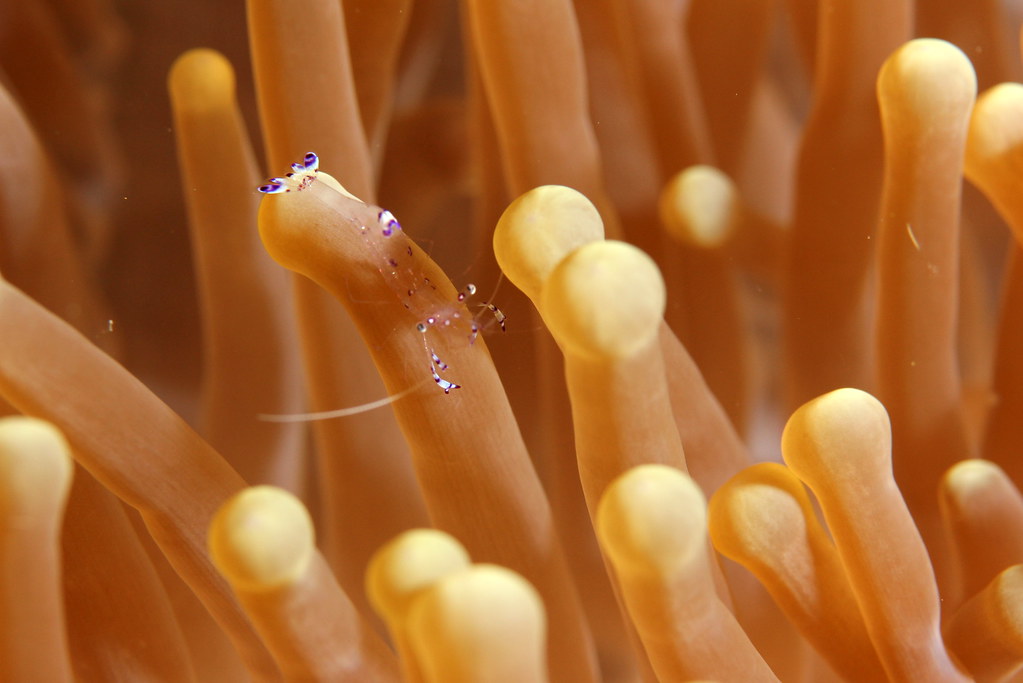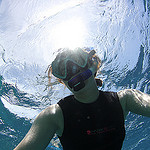
We noticed Catherine Marshall has been busy capturing what she's seen in her diving adventures. And after admiring over 200 of her photo albums, we asked Catherine to give us a little insight into her story as an underwater photographer, particularly her explorations of Japanese military shipwrecks in Micronesia.
What’s the history of this wreck site captured in the photo above?
The wrecks of Truk Lagoon were sunk as part of Operation Hailstorm, a coordinated effort by U.S. forces to destroy the Japanese fleet based in Chuuk, which took place February 17 and 18, 1944. A reconnaissance flight was seen by the Japanese two days previously, giving time to move many of their warships, but leaving many cargo ships containing supplies for the war effort mostly undefended.
The Fujikawa Maru (in the top photo) is one of the more famous dives of Truk. This is partly due to its accessibility; it lies in relatively shallow water, and upright. The holds have a number of artifacts inside, including the mostly intact fuselage of a Zero fighter. Both the Fujikawa Maru and Shinkoku Maru lie relatively close to islands, and the run-off from these have resulted in spectacular soft coral growth.
Tell us about your journey to this location.
Actually getting to Truk Lagoon is a hassle but not difficult per se. It was one of the more unfriendly flight schedules in the world, with many of the flights going there departing in the early hours of the morning; the main routes are via Manila or Guam, with some direct flights from Palau and Yap. Once there, diving is either via liveaboard, or from tenders run by the dive shops on shore. I did a mixture of both.
What can you tell us about the human remains and the wrecks you visited?
A few of the ships have human remains on board – someone has rather artistically arrayed a number of arm and leg bones on the operating table of the Shinkoku Maru. One of the more gruesome finds was from a few years back, on the Yamagiri Maru, where the skull of the engineer was discovered fused into the roof of the engine room, where the main explosion had taken place.
Has anyone died from diving there?
I’m not sure with regards to your question of deaths while diving in Truk. I’m sure there have been some, it’s a fairly common place for decompression illness due to the depths and repetitive diving. Other hazards include the overhead environment — it’s possible to penetrate several levels into unlit engine rooms — and unexploded ordnance, as well as sharp edges, etc.
Are you allowed to take any relics that you find?
It’s illegal to take any items from the wrecks. In the past, a lot of items have been removed, which has detracted form the diving today. Nowadays, a lot of the artifacts are hidden by the dive guides and brought out for dives, then put away again, to reduce the chances of theft.
How far down are the wrecks at this dive site? How much dive time is required to enjoy them?
The San Francisco Maru is one of the deepest wrecks in Truk Lagoon, and probably the deepest that is dived regularly. It’s known as the “Million Dollar Wreck”due to the number of artifacts on board. It’s 45m to the superstructure and 50m to the deck – 63m to the seabed but not many people go that deep! The most interesting parts are the tanks and guns on the deck, and then the holds (necessitating adding some extra depth dropping down next to the trucks etc). My total dive time was 65 minutes, of which 34 minutes was decompression time. When you include the time to get down, that doesn’t leave long on the wreck.
Tell us about yourself.
I’m a Brit who moved to Australia in 2009 for work, and am here for the foreseeable future. My day job is medicine — I’m training to be an emergency physician. I first properly got into photography when I bought my first SLR in 2006 and got my first (compact) underwater housing in 2007. I didn’t graduate to underwater SLR photography until 2011 — there’s a lot to learn and you feel like a beginner again.
What gear do you use?
I’ve always used Canon cameras, purely through familiarity. I started with an Ixus, then moved on to the S95. Since 2011, I’ve been using a Canon 550D with Nauticam housing — Tokina 10-17mm for wide angle and Canon 60mm macro for close-up, with an Inon S2000 strobe. The entire lot was stolen in January. I’ll get a replacement from insurance, but still waiting on that. I still have my trusty old compact camera though!
Do you have any tips for shooting underwater?
I guess the first tip would be to wait until you’re comfortable in the water before you start taking photos. Before I started taking pictures, I’d been diving for a few years, and I felt like I had to relearn my buoyancy all over again. There’s no sense getting a great picture if you knock that beautiful coral off the wall 30 seconds later!
The other thing is to keep diving. The main teacher is experience — spending plenty of time underwater and observing. If you’re not there, you won’t get the shot!
What’s your favorite dive site?
There are lots of places in the world that are amazing, and I’m not sure I can pick a single favorite. In Australia, I’d pick two places — the Pipeline in Nelson Bay, which is a fantastic macro site, and Julian Rocks in Byron Bay (which actually consists of a dozen or so sites within the marine park). Both sites have a huge diversity that you don’t expect on your back door. The Pipeline has been rated as one of the best muck diving sites in the world — cruising along over a very uninspiring seabed, you can find all sorts of amazing creatures, especially nudibranchs (colorful sea slugs) and seahorses.
What diving moment was the most dangerous?
The photos you’d expect to be risky are actually not. None of the shark photos were risky – we were inside a cage observing the great whites. And the grey nurse sharks, while looking ferocious, are placid and timid. I’d say one of my most risky dives was in Truk Lagoon, on the San Francisco Maru – it’s a deep wreck. And while the dive was very well planned and executed, it’s important not to get carried away taking photos. At 52 meters, you experience nitrogen narcosis, a sensation of being drunk underwater, which like alcohol affects everyone differently. Having said that, the most challenging photos are actually the macro subjects, such as the pygmy seahorse, who are tiny and extremely camera shy. In a strong current it can be extremely difficult to see them, let alone get a decent shot!
Thank you, Catherine, for the interview.
Explore more photography in Catherine Marshall’s photostream.
